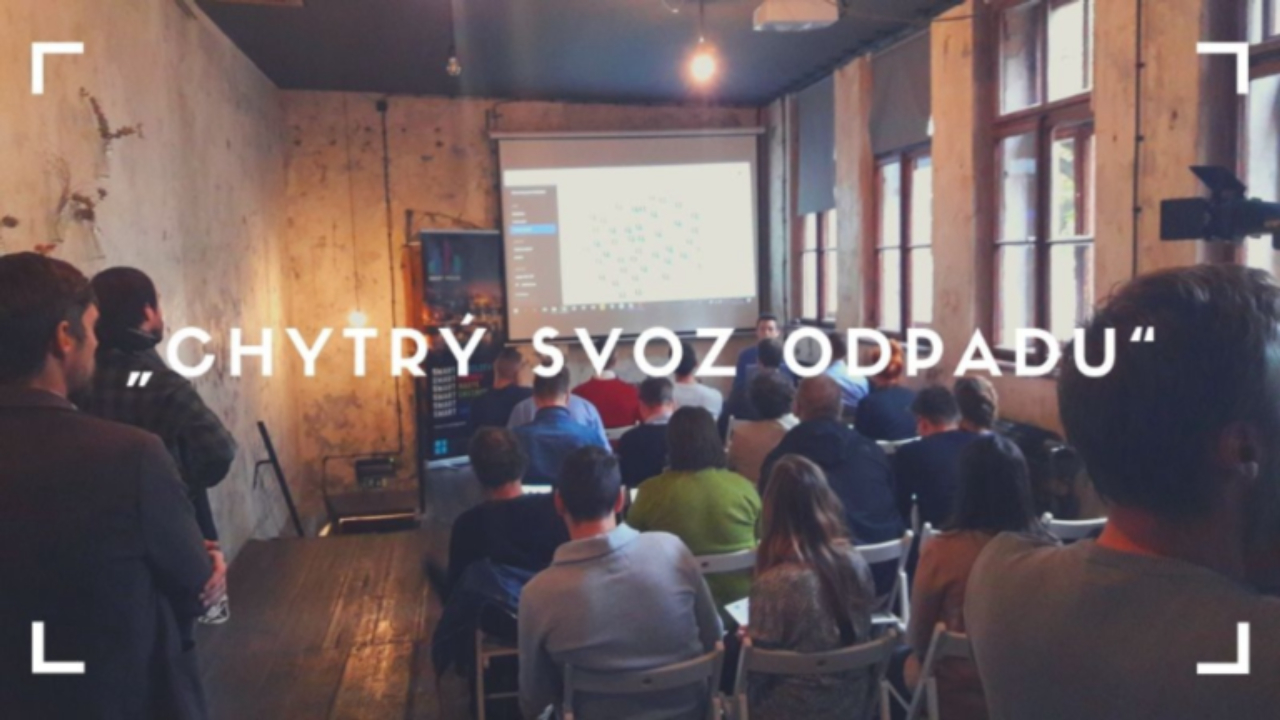
Prague, 8 October 2019 – We are bringing a new feature to all users of the Moje Praha mobile application displaying current fullness of 424 separate waste collection containers in the capital. The citizens of Prague will thus be able to easily find the nearest location and check whether it is possible to dispose of sorted waste there. The new mobile application update is part of a pilot project entitled Smart Waste Collection, which was launched in February this year and will run for 12 months.
The main objective of the pilot project is to build and test a tool that will enable on-line monitoring of the fullness level of selected waste collection containers (paper, plastic, clear glass, stained glass, beverage cartons and metal packaging). We expect this technology to provide the city with new information on container yields, thus helping to refine and qualify decisions on budgeting and expenses in waste collection frequency.
“The modern digital waste management system using smart technologies and elements of the Internet of Things, which we are testing in the pilot operation, may in the future put an end to residents’ annoyance experienced with overfilled containers. Thanks to our mobile application Moje Praha all city residents will then be able to view a map informing about the current state of container level of fullness in individual locations,” says Michal Fišer, CEO of the municipal company Operátortor ICT, a.s (JsC), responsible for testing and implementation of innovative and smart solutions in Prague.
In the Moje Praha application, the city residents have newly available information on the location of the site, the type of separated waste at the given site, and on selected containers also the level of fullness and time of the last measurement. Within the Moje Praha app users now have the option to choose topics and areas to display on the home page according to their interest.
There is also an application available from the sensors manufacturer called Waste monitoring app Sensoneo. The two applications are available for both Android and iOS mobile operating versions. The ICT Operator team of advance designers also developed a software tool for the city and urban district workers to view container filling and dump history, enabling creation of e.g. report on problematic locations or collection efficiency.
“For the Prague Municipal Authority this joint pilot project with ICT Operator represents an interesting experience and the opportunity of monitoring real-time fill-level of primarily underground containers that allows verifying or comparing the set parameters of their collection through on-line monitoring. The project can help the Municipality to optimize the collection of sorted waste and we strongly believe that the results and experience of the implementation of the project will subsequently improve the efficiency of providing the waste collection service, including improving the city's cleanliness level” adds Radim Polák, the manager of the Prague Municipality Waste Department.
So far the installation in Prague includes total of 464 sensors fitted in bottom discharge hopper containers, of which 424 to measure the fullness level and 40 for detecting clogging in disposal shafts of the underground containers. Sensors by Sensoneo j. s. a. send data on the current level of waste in the container at regular intervals 6 times a day to the capital’s Golemio data platform. Using an additional sensor, clogging of disposal shafts of 20 underground containers for paper and 20 underground containers for plastics is also being tested. This should prevent a situation in the future where any waste accumulates around an unfilled container.
All data obtained through installed sensors are sent to the capital’s Golemio data platform. “Thanks to the data from the pilot project that the Golemio data platform processes we can clearly identify problematic containers, i.e. those filled in short period of time, but also containers that are being collected at times when they are not full yet. On average, containers are completely filled at 19.4 % of the time. On the other hand, 24 % of collections took place when the container was 50 % or less full. In the future, the data may serve as a basis for deciding whether to increase or decrease the frequency of collection,” says Benedikt Kotmel, Head of the ICT Operator of the city data platform.